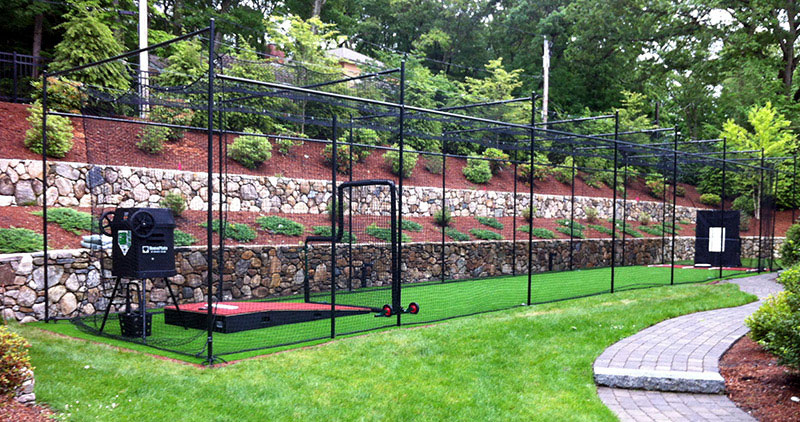How To Build A Pitching Mound For Little League
It is a full 14 feet 6 inches shorter in distance than in major league baseball. This little league pitching mound has a thin edge all around to protect the pitcher.
Softball will forever be a part of my life! ⚾ any how I
The line from home plate.

How to build a pitching mound for little league. You need to determine the exact distance from the home plate and mark it if you have not done it before. Little league pitching mound dimension requirements: This will provide enough clay to create a stable, safe playing surface and good footing for the pitcher.
Little league pitching mound dimension requirements: The little league pitching mound height for younger players is 6 inches, with a base path of 60 feet. Oh and at 6 inches high you get the 1 inch every 1 foot drop as well.
Situate the pitcher's mound directly in line with home plate. Height of a little league pitching mound. Don't short step your pitchers!
Thanks for the great idea! 18” bronco league pitching mound dimension. I adjusted the height for my little league son, where the mound is only 6 inches heigh.
Measure and lay out your little league baseball diamond and pitcher's mound. I choose that height because in little league the mound is 6 above home plate. The next step in establishing your field layout is specifying your little league base and pitching distances, creating the perfect baseball diamond dimensions for successful play.
Your logical side won't let you buy anything that you can make. Use the right soil mix — a proper soil composition for a little league pitcher’s mound is said to be 40 percent clay, 40 percent sand, and 20 percent silt. The dimensions of the mound are 84 x 42.
This will serve as your frame. Contouring the mound, detailed on the next page, is not necessary if the infield is “crowned” so that the rise Make the measurements if you're using a string line, place one steel spike behind the pitching rubber location and one a little beyond home plate.
The allstar #5 little league pitching mound is our best seller and is made for little league mound games and practice. Turn your softball fields into baseball fields in minutes and save many hours of maintenance by converting all your ball fields to allstar little league pitching mounds. The end with the pitching rubber is the full width of a 2x6 (~5 1/2 ) and it tapers down to 2 at the bottom.
Your pitching mound will not get entirely build if there is not any home plate. The regulation height is usually 10 and a half inches for adults, but you want to be exact so you are practicing on an authentic mound. Maybe custom storage needs, logos/ colors, sizes etc.
And just for clarification, a standard pitching mound’s height is 10 feet. Cut the plywood to the size that fits the length and width of your frame. For older players, around 11 to 13 years old, little league increased the pitching mound height to 8 inches in 2013, and the base path is 70 feet for its intermediate baseball division.
Continue laying smaller and smaller diameter circles of mound clay on top of each other until the mound has reached the height marked on your stake in the center of the circle. Add or reduce height of the mound. Nail the plywood onto the frame.
Distance from home plate to pitching rubber: We only build 1:12 front slopes so your pitchers will always land on the mound! The flat section with the rubber is.
Smooth the mound, rounding it out where needed, and fill any low spots. Determine how high the pitching mound is in the league in which you play. Once you have built the mound to the proper height, you will need to.
10’ length of pitching rubber: Little league baseball diamond vs major league dimensions. Modifying the pitcher’s mound using a tape measure or pre‐measured length of rope or chain (6 feet ), create a 12‐foot diameter circle as shown.
Make each subsequent layer about 3 to 6 inches smaller in diameter. It’s true you’ll have to overcome the few challenges highlighted earlier but the benefits outweigh the challenges. Building a portable pitching mound (for under $100) it's a curse being an engineer.
Change the 2x10s to 2x6s, use the same dimensions and presto! Do the same on the right side. There should be a clear path longer than 60 feet (18.29 meters) between the pitcher’s mound and home plate.
Our #5 little league pitching mound. Little league rules concerning the size of the baseball diamond are different depending on the age of the players. Square the rubber into position by taking a measuring tape and measure from the front left corner of home plate to the front left corner of the pitcher's rubber.
Now you're ready to begin.

BUILD A PORTABLE PITCHING MOUND Summer 2013 Pinterest

Build a Pitchers Mound Brick design, Pitching mound

7 1/2ft x 6ft x 6in portable pitching mound for ages 5 and

Building a Home Batting Cage Batting cage backyard

Visualizing success on the pitcher's mound image Son

6" Tall Portable pitching mound for youth baseball! Easy

6" Tall Youth Baseball Portable Pitching Mound! Easy to

little league tshirt Little league, T shirt, Long

Artificial Turf for Sports Batting Cage Turf Backyard

Garage Full of Ferraris Coaching techniques, Baseball

Basketball Shoes Mid Top around Basketball Hoop Arcade

6" Tall Portable pitching mound for youth baseball! Easy

DIY Portable pitching mound Wood projects Pinterest

DIY Pitching Machine Baseball pitching, Catapult diy

Pin by Judy Gaddis on Baseball ⚾️ Baseball field

An Easy to Follow Ebook for building a portable pitching

View of from behind pitchers mound at night... Dodgers

Pin by Judy Gaddis on Baseball ⚾️ Baseball field

Post a Comment for "How To Build A Pitching Mound For Little League"